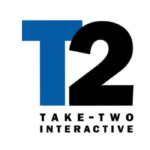Here are some strategies employed or measures taken by reviewees, to which the managers often fall prey and end up forming biased notions.
During appraisal time, all managers and human resources are busy sending reminders, collecting and sharing feedback, and providing ratings to employees and managers. Appraisals are important to determine the performance of people— individual goals as against organisational goals. Have we ever given any thought to how critical it is to provide constructive feedback, which in turn, tends to keep motivation high?
The impact of feedback is not only seen on rating but on the minds of the employees, for the next twelve months. It is important to appraise the line managers and manager of appraisal feedbacks. Few things, if taken into consideration, will help the managers assess the team for 12 months performance and also consider other attributes.
Here are some of the do’s for managers. While giving feedback, supervisors should consider KSAO (Knowledge, skills, ability, other attributes.)
Knowledge: Scale the employees on their work knowledge, and understand the level of each individual. Each employee should possess the required information and clear knowledge of the basics.
Skills: Consider the proficiency of the skills utilised over 12 months. Judge experience and implementation of skills in a desired manner, to evaluate the expected results.
Other attributes could be politeness, courteousness, good listening skills, working environment and required support from mentors.
Mentors should take into consideration the prejudices which one should avoid in their feedback.
At times, mentors remember one incidence which could have gone wrong and its after effects are seen in the appraisal forms.
HR can help and guide their team members about the biases which need to be looked upon and communicate them to the line managers to help them provide constructive feedback.
It is observed that as the appraisal month approaches, all are busy attaining their set KRA.
They start concentrating on their job and try to perform their best to impress their managers. Suddenly there is an upswing in performance. There is a difference in the overall approach.
These are strategies employed or measures taken by reviewees, to which the managers often fall prey and end up forming biased notions.
Let us look at these biases one by one:
First Impression (primacy effect): In this, the rater forms an overall impression about the ratee. Sometimes the candidate is selected and interviewed by other leads while being recruited for some other team. As a result, team managers end up with team members whom they have not assessed at the time of interview. So, they may not find the joinees fit as per their needs, because they are selected by someone else. This leads to the managers forming false impressions about the new joinees. These impressions are retained by the managers. Mentors also take into account these factors and give feedback during the appraisal.
Managers should try avoiding their own perceptions and impressions. They should merely concentrate on the work carried out by the team member concerned in the last 12 months, against their KRA.
Halo Effect: In this an employee is rated high in all areas because of one thing they are good at.
In other words, the manager thinks highly of an employee and instead of rating independently for each item (KSAO), the manager inflates the ratings. At times, the team members’ past individual goals are taken into consideration but their overall performance in the 12 months, their behaviour with colleagues, their people management skills, especially if they are handling a team, along with integrity issues get ignored.
At times, promotions are given in haste and later these very managers face problems and approach HR for demotions or terminations.
Horn Effect: On the flip side, employees are often rated as poor performers because of one thing they didn’t do well. Simply put, the individual’s performance is completely appraised on the basis of a negative quality or feature perceived. This results in an overall lower rating than may be warranted.
At times, mentors remember one incidence which could have gone wrong and its after effects are seen in the appraisal forms. If we consider the admin profile, many times there are certain external forces which are not in control of the admin team. The work of the admin team depends on the vendor’s response, their services and the staff. If the vendor doesn’t turn up with the required order details then the admin person is thought to be responsible for the non-fulfilment of tasks. The other constraints for the failure are completely ignored.
Similar situations arise in IT companies as well, when there is project-based work wherein the developer’s work is based on others’ inputs. If there is a delay in delivery due to the absence of one of the team members or due to some holidays, which hampers individual delivery time, then these factors should be considered and the level of dependency should be noted.
Managers should concentrate on ROWE (Result only work environment) wherein employees are paid for results (output) rather than the number of hours worked or breaks taken with other peer members. This focus on met or unmet results allows significant freedom to the mentors to concentrate on final output rather than on few minute details of the employees’ daily routine. Taking a break from other group members should not be a matter of concern for any mentor, but taking breaks with only one’s own team cannot be made a rule. Breaks are taken to get some time to do what one wishes, and that could be spending time with any peer member in the organisation. ROWE approach leads teams towards an agile, result-focussed platform.
Excessive Stiffness or Lenience: Depending upon the reviewers’ own canons, values and physical and mental makeup at the time of appraisal, the ratees may be rated very strictly or leniently. Some of the managers are likely to take the line of least resistance and rate people high, whereas others, by nature, believe in the tyranny of exact assessment, considering more particularly the drawbacks of the individual and thus making the assessment excessively severe. The leniency can render a system ineffective. If everyone is to be rated high, the system has not done anything to differentiate among the employees.
Just because some team members are on good terms outside office, they end up getting a high rating and those who are not outspoken but good performers, end up in the monitoring zone.
At times, feedback is given in a casual manner to a team member, despite the fact that the member has already been in the company for long. This is because it is assumed that he/she is performing well. Hence, there is not much to say. At times, managers start recording some minor errors that have occurred in the recent past and list them all during the appraisal meeting. Even if it is related to some team conflicts with team leads which would have been resolved later.
Central Tendency: Reviewers are not able to give constructive feedback and want to maintain good terms with the team. Hence, they opt for neutral feedback. Appraisers rate all employees as average performers—neither high nor low, and follow the middle path.
Mentors do not exist to make the team happy or sad. They are given authority and delegation to get the work done. Unless precise feedback is given to the team, the members will not lead anywhere. High performers will get demotivated while low performers will continue to have a casual approach.
Personal Biases: The way a supervisor feels about each of the individuals working under him —whether he likes or dislikes them — as a tremendous effect on the rating of their performances.
At times just because some team members are on good terms outside office, they end up getting a high rating. As a result, some team members who are not outspoken but good performers, end up in the monitoring zone, just because they do not share any out-of-office bonding with the managers. Personal bias can come from information obtained from colleagues, considerations of faith and thinking, social and family background and so on.
Spillover Effect: If a team member had one key achievement in the distant past, it is assumed that he would be continuing the same performance. The present performance is evaluated more on the basis of past performance. If some employee was kept on PIP (performance improvement plan) then it is assumed that he is still performing low.
Recency Effect: As the term suggests it occurs at a time immediately before the present. The employee’s most recent behaviour becomes the primary focus of the review. The rating is influenced by the most recent behaviour ignoring the commonly demonstrated behaviours during the entire appraisal period. As stated in the beginning, the reviewee shows consistent performance for recent months, and the punctuality graph goes high. Smart employees ensure that these things are observed by their supervisors and very often supervisors consider the employees’ recent activities and rate them as per current occurrences. When poor performers do something terrific, their past performance is forgotten. If excellent performers make mistakes, it weighs down the rest of the review.
If an employee has taken a long leave recently due to some personal emergency and again approaches the supervisor for a day’s leave just after one month of resuming duty, then the manager just concludes that the employee is in the habit of taking too many leaves; that this hampers the productivity, and therefore, her/his contribution is assumed to be low. It is forgotten that the same employee had put in extra efforts whenever the business demanded and stretched for hours together during the assessment period of 12 months.
Supervisors may not keep the HR jargons in mind but HR could make them understand biases which could be avoided.
Managers tend to consider appraisals as rather time consuming. Instead, they should approach the performance appraisal process as a golden opportunity to give their staff feedback, listen to employees’ comments, review the job description, and discuss and correct performance problems.
Use performance pots to simplify employee reviews. You may sit down to prepare a staff member’s review and realise that you can remember only what the person has done in the past few weeks. Or, you allow only a single incident (good or bad) to colour your assessment. If you’re relying solely on your memory to evaluate employee performance, you’re making appraisals far more difficult than necessary. It is best to institute a simple recording system to document employee performance. Performance logs don’t need to be complicated or sophisticated. They can simply be paper files in a folder or computer files. Opt for whatever is most comfortable.
In the present scenario, many companies are doing away with the practice of appraisals and opting for periodical reviews. Still, these biases can always help to provide constructive feedback to employees.
(The author works with a talent solutions company.)
Value our content... contribute towards our growth. Even a small contribution a month would be of great help for us.
Since eight years, we have been serving the industry through daily news and stories. Our content is free for all and we plan to keep it that way.
Support HRKatha. Pay Here (All it takes is a minute)





































Excellently presented Archana, keep it up.
Excellently presented Archana, keep it up.
Excellent information.
Very good information and it helped me do my assignment